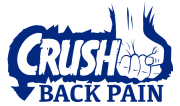The multifidus is a deep spinal muscle that spans the entire spinal column. From the neck to the lower back. Generally when people refer to the multifidus they mean the lumbar multifidus.
This muscle gets quite a bit of attention when people have lower back pain. The reason being, the muscle has been shown to be smaller with decreased cross sectional area in people with lower back pain. In addition research has shown that improving the strength, size, and function of the multifidus muscle decreases lower back pain and improves function.
Multifidus Anatomy
The multifidus muscle originates on the sacrum (tail bone) and attaches to the spinous processes and back part of the facet joint capsule. The muscle is encased within the thoracolumbar fascia.

Innervation is from the medial branch of the posterior ramus of the spinal nerve.
Blood supply is from the lumbar and lateral sacral arteries.
Function
Multifidus has a good lever arm for spinal extension due to its origin and insertion points. The muscle is a true lumbar extensor. In addition to extending the lumbar spine the muscle also acts as a stabilizer. As the muscle is encased in the thoracolumbar fascia it is able to increase lower back stiffness and stability by pushing out against the fascia as it contracts. This increases tension through the thoracolumbar fascia, stabilizing the lower back.
FAQs
The best way to strengthen multifidus involves exercises that extend the lumbar spine, or activate the spinal extensors to stabilize the lumbar spine during movement.
Exercises that will strengthen the spinal extensors include hip hinges, bird dogs, bridges, bodyweight rows with straps or rings, push-ups, forward lunges with forward trunk, trap bar deadlifts, and walking. This list is by no means exhaustive, these exercises will give you some ideas to get started.
A deep spinal muscle that extends and stabilizes the spine. It’s present from the neck to the lower back. The muscle is encased in the thoracolumbar fascia. Dysfunction and atrophy of the muscle has been linked to lower back pain.
The muscle is activated during spinal extension primarily. Any exercise that extends the lumbar spine or stabilizes the lumbar spine will activate multifidus to some degree. Rows, hip hinges, deadlifts, squats, bird dogs, walking, lunges with forward trunk, push-ups all activate the muscle.
The muscle is located from the cervical spine (neck) to the lumbar spine (lower back). It spans the entire spinal column. In the lower back the muscle attaches from the sacrum (tail bone) to the spinous processes (bone you can feel along the middle of your back) of the vertebrae. Usually the lumbar multifidus is what people talk about due to the association between lower back pain and dysfunction of this muscle.


